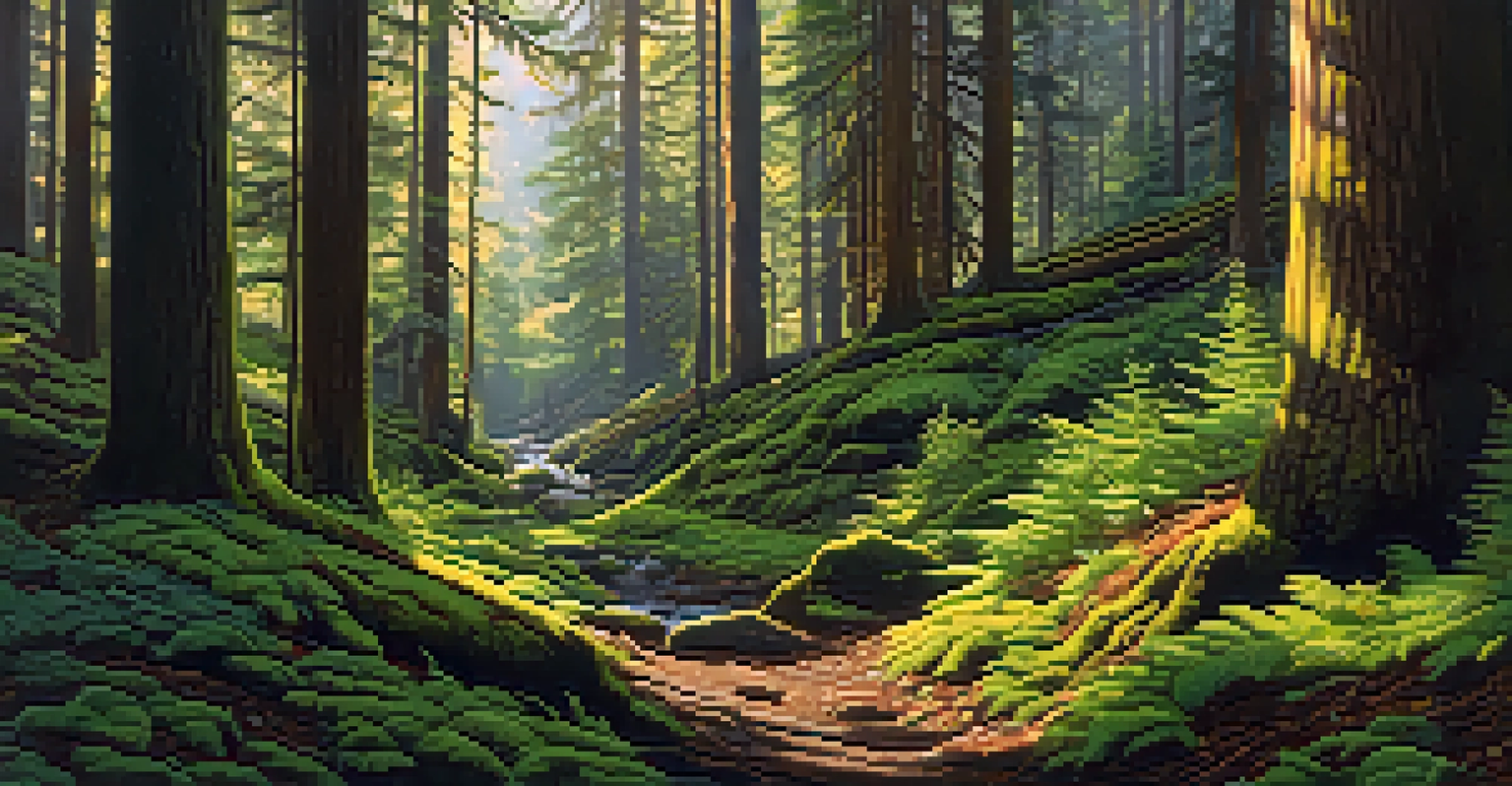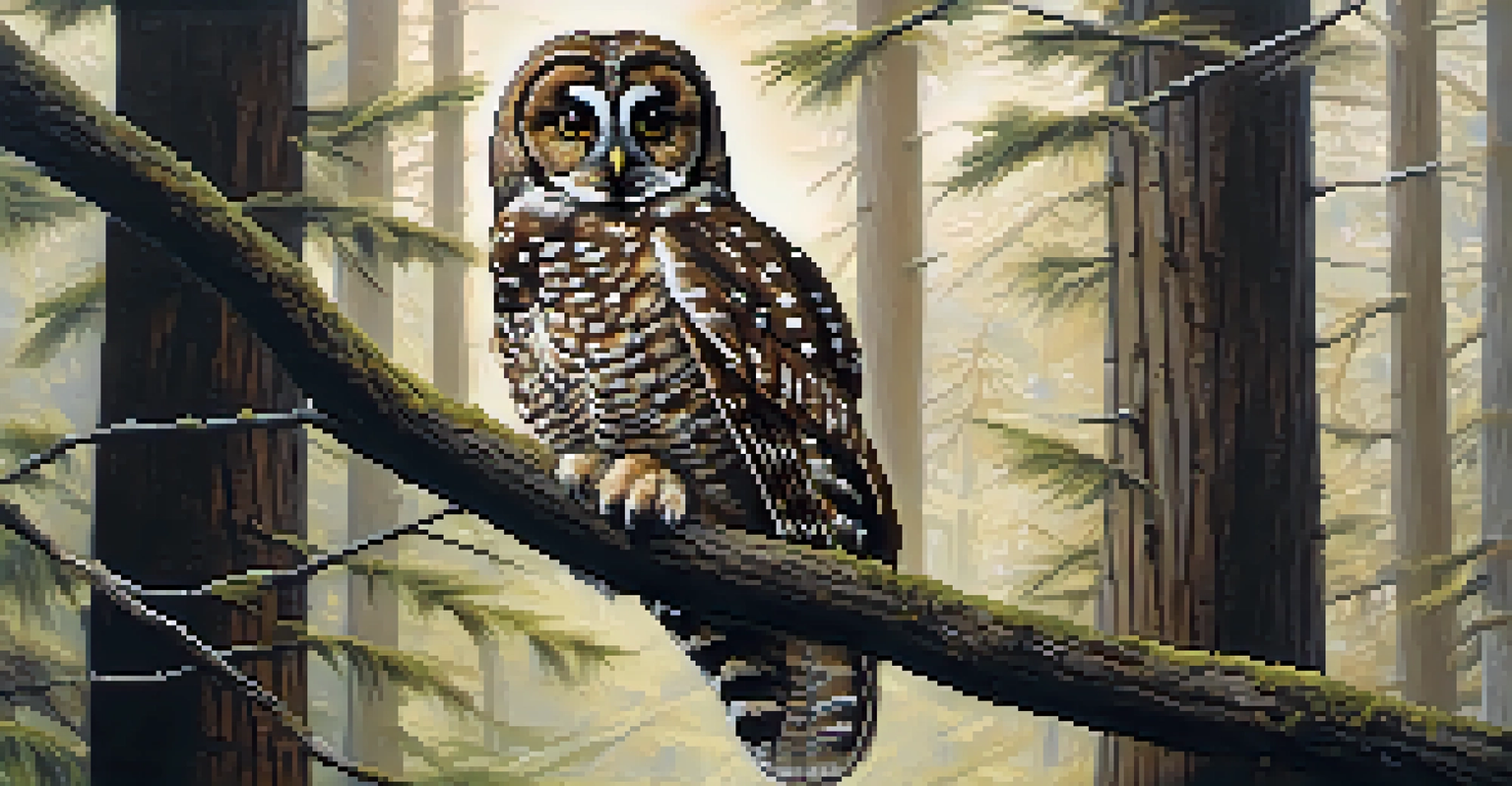Washington State's Endangered Species and Conservation Needs

Introduction to Washington State's Biodiversity
Washington State is a treasure trove of biodiversity, boasting diverse ecosystems ranging from lush forests to pristine coastlines. This rich variety supports an array of plant and animal species, many of which are unique to the region. However, this natural wealth is under threat due to various factors, including habitat loss and climate change.
The environment is where we all meet; where we all have a mutual interest; it is the one thing all of us share.
Understanding the importance of preserving this biodiversity is crucial, not just for the species themselves but also for the health of the ecosystems they inhabit. Healthy ecosystems provide essential services like clean air, water, and food, which benefit all living organisms, including humans.
As we delve into the state of endangered species in Washington, it becomes clear that conservation efforts are vital. By recognizing the challenges these species face, we can work together to implement effective conservation strategies.
Key Endangered Species in Washington State
Among the most notable endangered species in Washington State is the Southern Resident orca, a majestic marine mammal facing severe threats from pollution, reduced prey availability, and vessel traffic. With fewer than 75 individuals remaining, their survival hinges on immediate conservation actions.

Another critical species is the northern spotted owl, which struggles against habitat loss due to logging and competition from the barred owl. Protecting their nesting sites and fostering old-growth forests are essential steps to ensure their populations can rebound.
Biodiversity is Under Threat
Washington State's diverse ecosystems are facing significant challenges from habitat loss and climate change, jeopardizing the unique species that inhabit them.
The Washington State Department of Fish and Wildlife maintains a list of endangered species, which also includes the gray wolf and the marbled murrelet. Each of these species plays a unique role in their ecosystems, highlighting the interconnectedness of life.
Threats Facing Endangered Species
Endangered species in Washington face numerous threats that undermine their survival. Habitat destruction, primarily due to urban development and agriculture, has drastically reduced the space available for wildlife to thrive. This loss not only impacts the species directly but also disrupts the ecosystems they are part of.
In nature’s economy, the currency is not money; it is life.
Climate change compounds these challenges, altering habitats and food availability. For instance, rising temperatures and changing precipitation patterns can affect the breeding cycles of certain species, making it harder for them to survive and reproduce.
Additionally, pollution from agricultural runoff and industrial activities further endangers fragile habitats. These pollutants can lead to declines in water quality and food sources, creating a toxic environment for wildlife.
The Role of Conservation Organizations
Conservation organizations play a crucial role in protecting endangered species in Washington State. They engage in research, habitat restoration, and policy advocacy, working tirelessly to ensure that the voices of these vulnerable species are heard. Organizations like the Washington Wildlife Federation and the Northwest Ecosystem Alliance are at the forefront of these efforts.
These groups often collaborate with local communities, educating residents about the importance of biodiversity and sustainable practices. By fostering a sense of stewardship, they empower individuals to take action in their own backyards, whether through habitat restoration projects or supporting local wildlife.
Conservation Efforts Are Crucial
Organizations and government initiatives are essential in implementing strategies to protect endangered species and their habitats in Washington.
Fundraising and awareness campaigns are also vital components of their work. By rallying community support, these organizations can secure the resources needed to implement effective conservation strategies and drive meaningful change.
Government Initiatives for Conservation
The state government has established various initiatives aimed at protecting endangered species and their habitats. The Washington State Department of Fish and Wildlife implements recovery plans for at-risk species, focusing on habitat preservation and restoration.
Additionally, the state collaborates with federal agencies, such as the U.S. Fish and Wildlife Service, to enhance conservation efforts. This partnership allows for pooling resources and expertise, ultimately leading to more effective strategies.
Legislation, such as the Endangered Species Act, provides legal protections for threatened species, prohibiting actions that may harm their populations. These laws are essential in ensuring that both public and private entities adhere to conservation standards.
Community Involvement in Conservation Efforts
Community involvement is a powerful tool in conservation efforts. Local residents can make a significant difference through citizen science initiatives, where they contribute data about wildlife sightings and habitat conditions. This information helps researchers understand species distribution and inform conservation strategies.
Volunteer opportunities abound, from habitat restoration projects to educational outreach programs. Engaging the community not only aids in conservation but also fosters a connection to the natural world, instilling a sense of responsibility toward local wildlife.
Community Involvement Matters
Active participation from local communities in conservation efforts can significantly impact the preservation of wildlife and their ecosystems.
Moreover, local businesses can support conservation by adopting sustainable practices and promoting eco-friendly products. This collective effort helps to create a culture of conservation that benefits both wildlife and the community.
The Future of Endangered Species in Washington
The future of endangered species in Washington State depends on our collective actions today. With ongoing threats from habitat destruction and climate change, the need for robust conservation strategies is more pressing than ever. It’s essential to remain optimistic and proactive in our efforts.
Innovation in conservation practices, such as using technology for monitoring species and habitats, offers promising avenues for success. For example, drones can survey large areas, providing data that helps conservationists make informed decisions.

Ultimately, a collaborative approach between government, organizations, and individuals will be vital. By working together, we can create a sustainable future for both endangered species and the ecosystems they inhabit, ensuring that future generations can enjoy Washington's natural heritage.